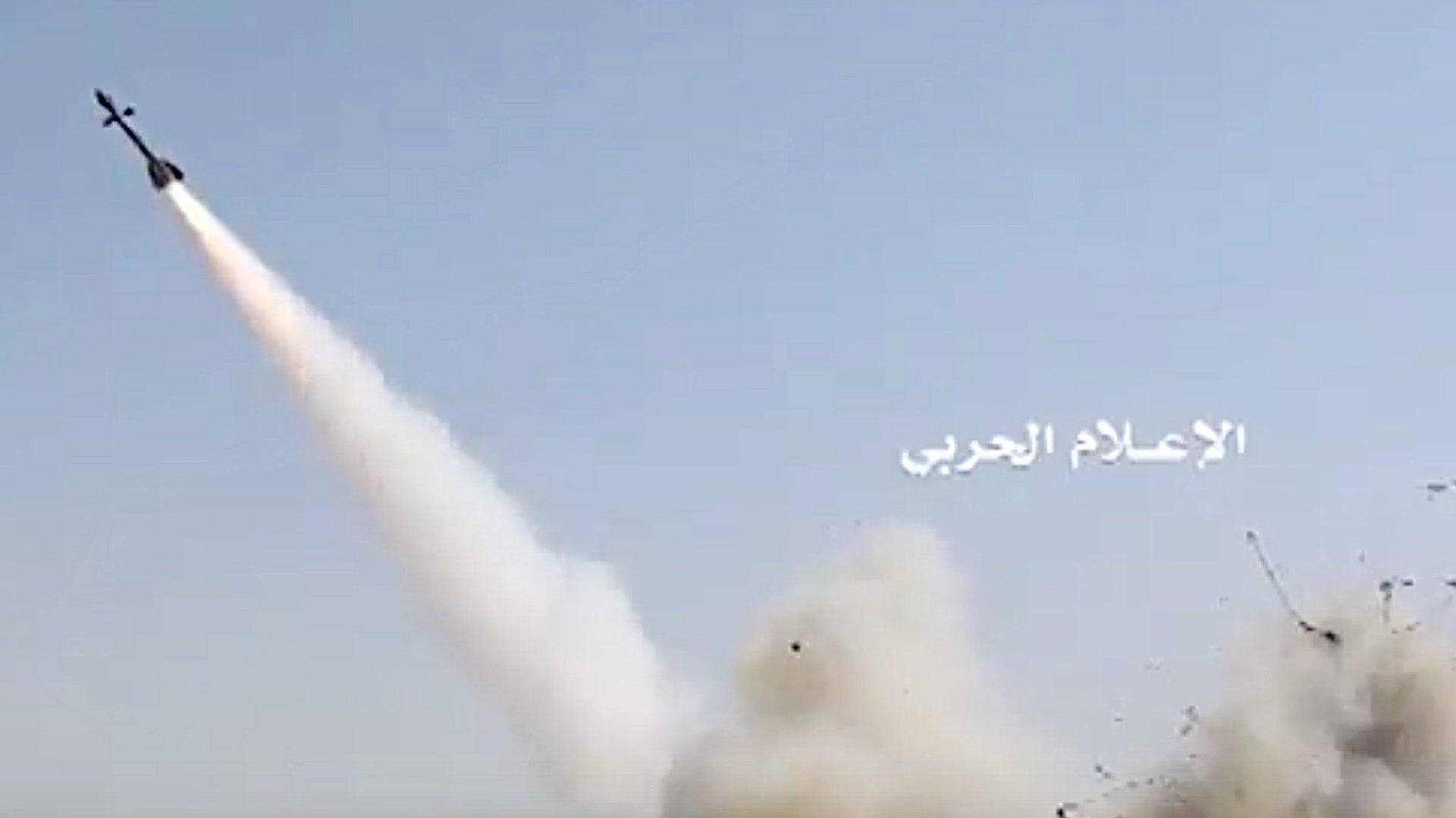Reports that Houthi rebels had turned seized Russian made air-to-air missiles into improvised surface-to-air missiles have been circulating for months. An attack on a Saudi F-15 in January that was filmed by a commandeered FLIR turret was claimed to have been executed using one of these missiles. Now it seems we have definitive proof that these weapons are indeed being put to use in Yemen and in an effective manner.
Video hit social media yesterday showing an R-27 being launched from the ground against a high-flying jet. Houthi rebels claim the aircraft targeted was a Saudi F-15S and that it shot it down, but we still don’t have any official confirmation of this being true, and considering how the Saudis have dealt with these incidents in the past, we may never receive such a report. A streaking fireball can be seen in the video which points to the aircraft at least being severely damaged in the engagement.

In recent weeks the Saudi-led coalition posted aerial surveillance images of a Vympel R-27 turned SAM mounted on a truck. The image is troubling for coalition aircrews as the R-27 is a medium-range air-to-air weapon, and the P model, like the ones the Houthi rebels are putting to use, use passive infrared homing.

This means that if the targeted aircraft isn’t equipped with missile launch detectors, and only the Saudi’s newest and most advanced F-15s are, the F-15SA, and the aircrew does not spot the missile as it ascends towards them, they would have no indication of an impending attack until it is too late.

The missile’s high speed also makes reaction time highly limited, as you can see in the video. In this case the missile’s incoming vector was from below and behind the jet on its left side, meaning it was likely not seen nor detected before it detonated very near the targeted aircraft.
There is also intelligence that shows short-range R-73 air-to-air missiles have also been adapted into SAMs. Employing one of these weapons would be more challenging due to its more limited range, which is exacerbated by the fact that it is launched from the ground and without a booster, making what is already a limited-range air-to-air missile much more limited in terms of reach.

Many to believe that Iran is actively helping with the Houthi’s missile conversion initiative, which makes perfect sense as they have helped with supplying or adapting other advanced weapons for the Houthis to use in the past. These have including everything from anti-ship missiles and explosive-packed drone boats, to ballistic missiles, to ‘suicidal drones that target air defense systems. At the same time, some analysts think these conversions could be done by ex-Yemeni Air Force engineers who are familiar with the servicing the missiles.
As for where the missiles came from themselves, they were looted from air bases in the western part of country as the Yemeni civil war kicked off. Yemen’s now largely shattered air force flew dozens of fairly advanced MiG-29SMTs, the first of which were delivered in the mid 2000s. The primary air-to-air armament for those multi-role jets were R-73E and R-27T missiles.
It’s unknown how many of these missiles have survived three years of incredibly bloody conflict, but clearly some of them have. And considering they didn’t have to be smuggled into the country, they offer Houthi fighters and possibly the powers that be in Tehran an attractive anti-air resource in which to badger coalition fighter aircraft.
If the events of the last few months are any indication, we haven’t seen the last of these jury-rigged Houthi SAMs.
Contact the author: Tyler@thedrive.com
